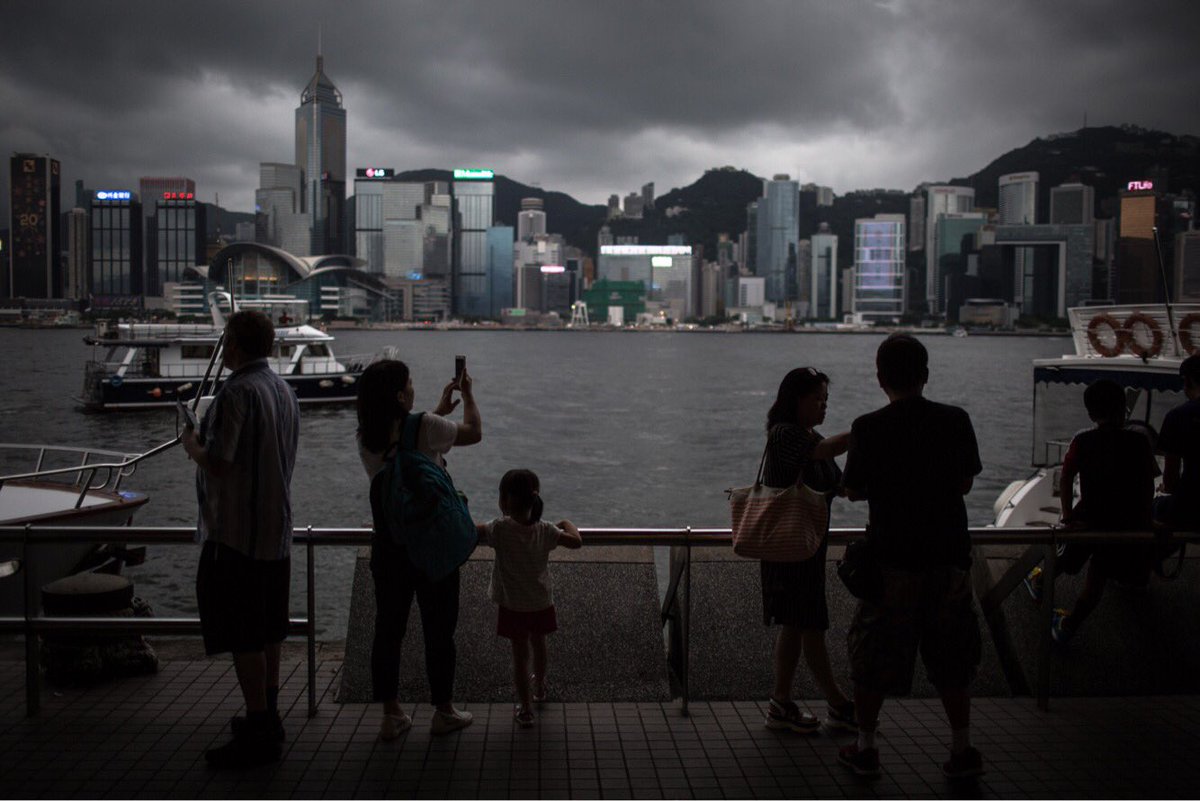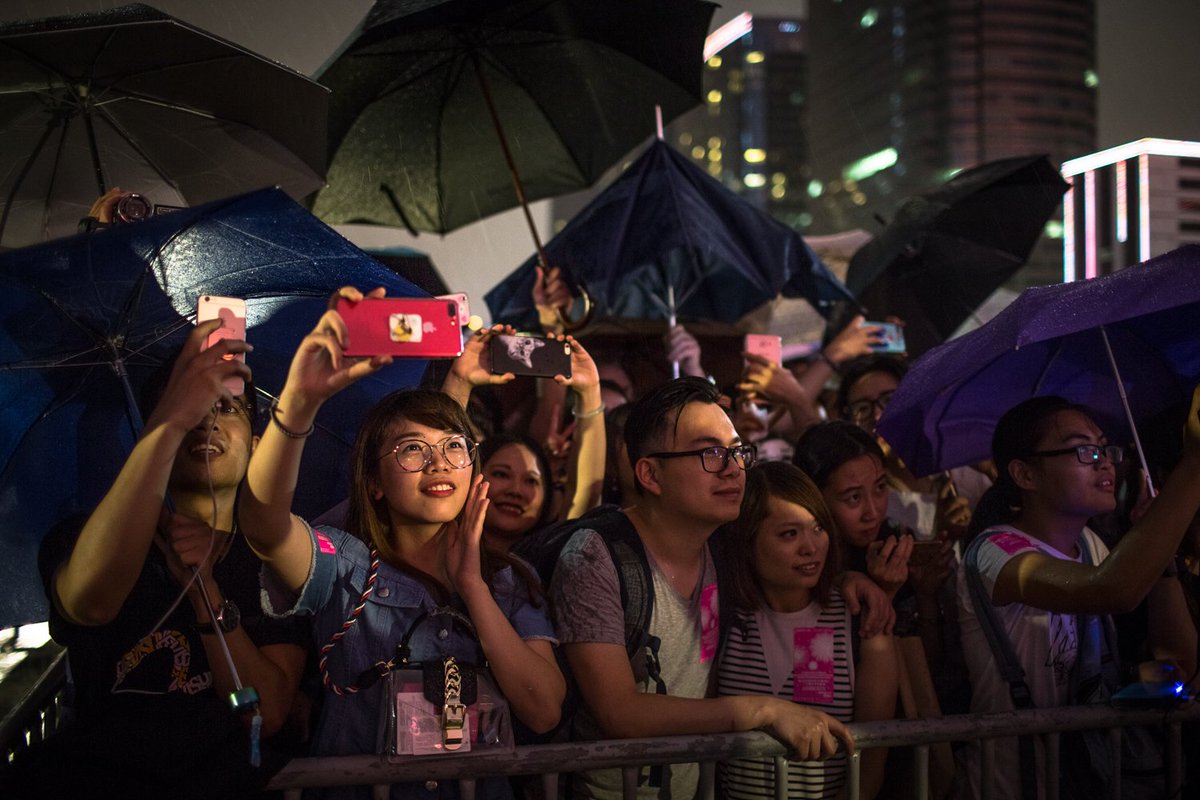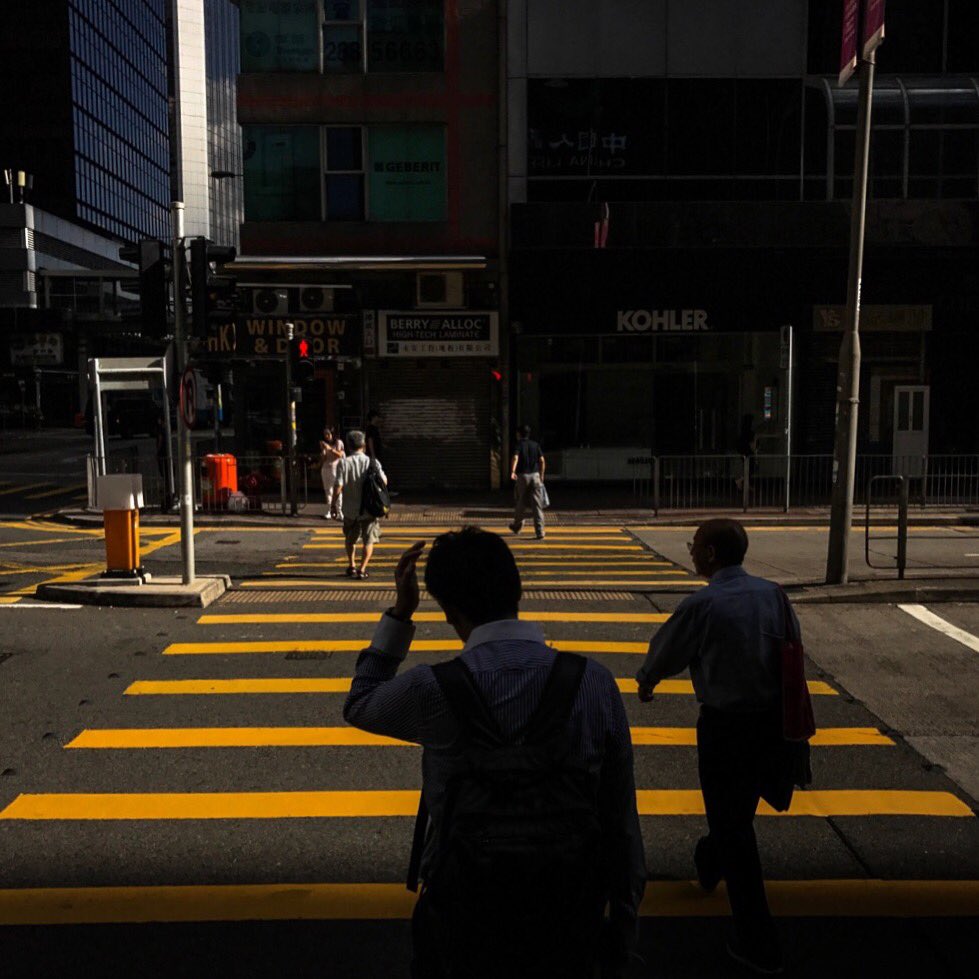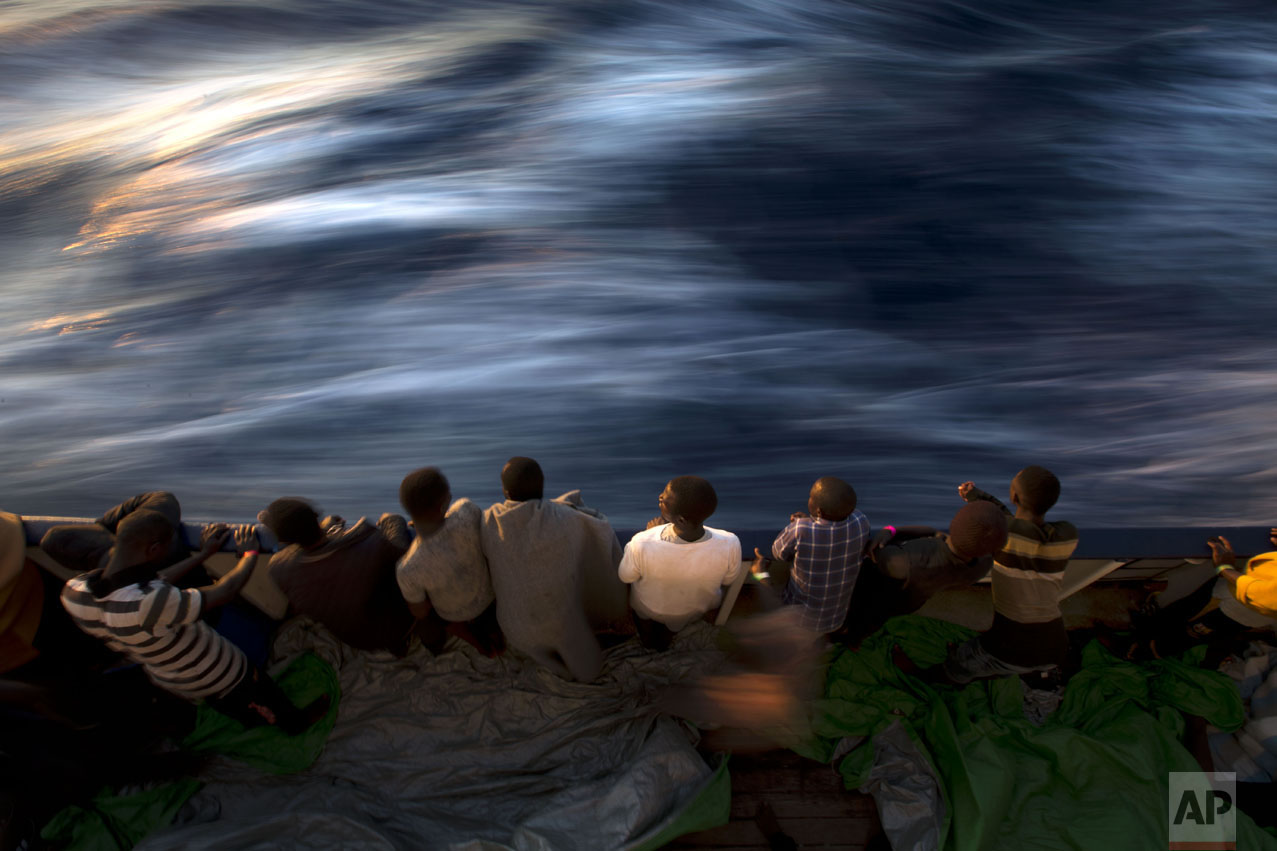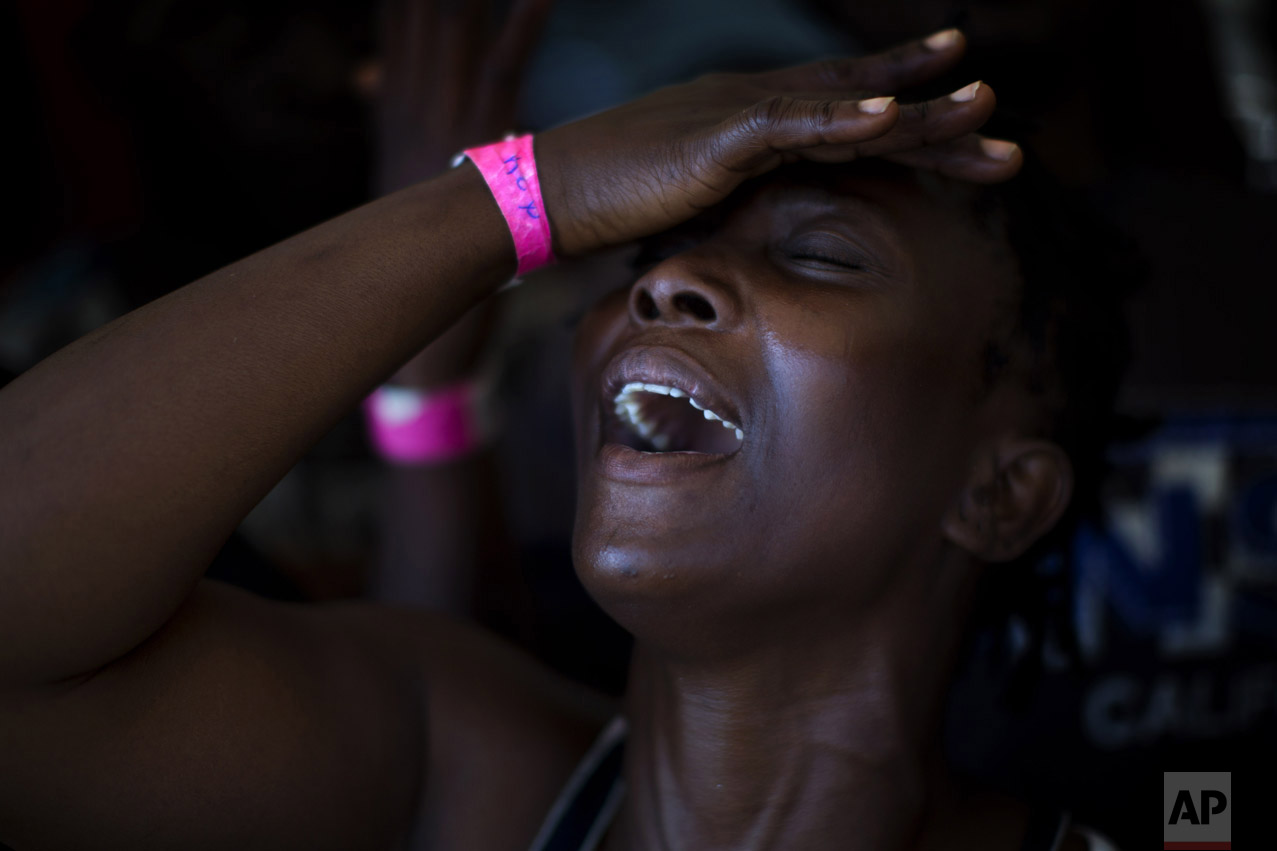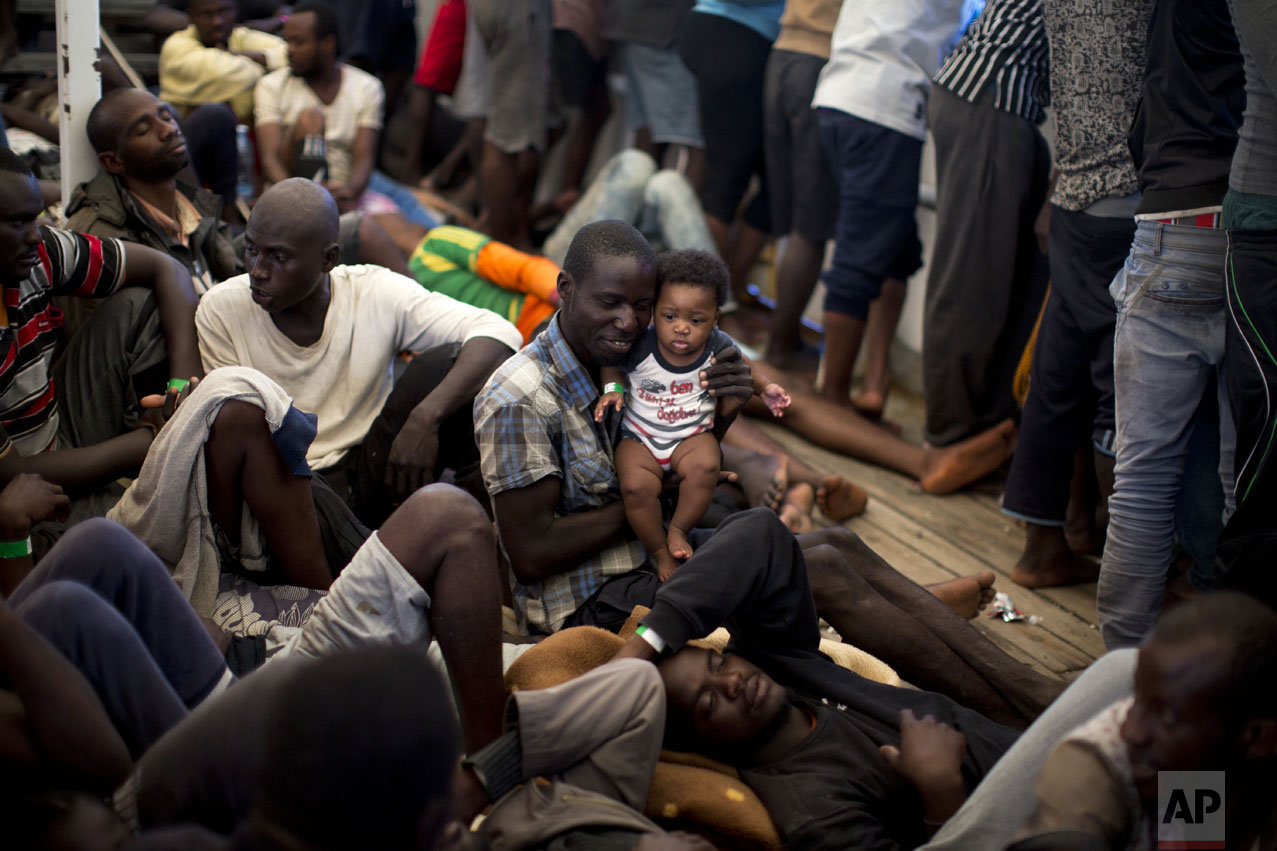.
![]()
Erschöpft: Einem Luftangriff in der Altstadt von Mossul sind sie nur knapp entkommen:photo © Emanuele Satolli via ZEITONLINE, 15 July 2017
![]()
Weg von hier: Hinter ihnen liegt der Teil von Mossul, der zuletzt noch schwer umkämpft war:photo © Emanuele Satolli viaZEITONLINE, 15 July 2017
![]()
Ein kleiner Moment der Ruhe: Sie haben es aus einem Teil der Mossuler Altstadt herausgeschafft, in dem sich irakische Truppen und IS-Kämpfer heftige Gefechte liefern.: photo © Emanuele Satolli via ZEITONLINE, 15 July 2017
![]()
Selfies mit dem Feind: Irakische Soldaten, nachdem sie einen Kämpfer des "Islamischen Staats" in der Altstadt von Mossul gefangen genommen haben.: photo© Emanuele Satolli via ZEITONLINE, 15 July 2017
![]()
Den Gefangenen präsentieren die Iraker wie eine Trophäe.: photo© Emanuele Satolli via ZEITONLINE, 15 July 2017
![]()
Diese Frauen und Kinder haben nach ihrer Flucht aus der Altstadt von Mossul von der irakischen Armee Essen bekommen.: photo© Emanuele Satolli via ZEITONLINE, 15 July 2017
![]()
Nach einem Luftangriff der Anti-IS-Koalition steigt über Mossul Rauch auf.: photo© Emanuele Satolli via ZEITONLINE, 15 July 2017
![]()
Mitglieder der irakischen Spezialkräfte, der Goldenen Division, in einem Gefecht gegen IS-Kämpfer.: photo© Emanuele Satolli via ZEITONLINE, 15 July 2017
![]()
Gefangene der irakischen Armee: Die Männer konnten ein stark umkämpftes Areal verlassen, doch ihnen wird vorgeworfen, IS-Kämpfer oder -Sympathisanten zu sein.: photo© Emanuele Satolli via ZEITONLINE, 15 July 2017
![]()
Irgendwohin, wo es sicherer ist: eine Frau mit ihren Kindern.: photo© Emanuele Satolli via ZEITONLINE, 15 July 2017
![]()
Ein irakischer Soldat der Spezialkräfte in einem Gebäude nahe der Frontlinie mit den letzten IS-Kämpfern.: photo© Emanuele Satolli via ZEITONLINE, 15 July 2017
![]()
Irakische Spezialkräfte während eines Gasangriffs der Dschihadisten in Mossul.: photo© Emanuele Satolli via ZEITONLINE, 15 July 2017
![]()
Verschanzt zwischen Trümmern: irakische Spezialkräfte in der Altstadt von Mossul.: photo© Emanuele Satolli via ZEITONLINE, 15 July 2017
![]()
Einer flieht, einer verteidigt die Position in der Altstadt von Mossul gegen IS-Kämpfer.: photo© Emanuele Satolli via ZEITONLINE, 15 July 2017
![]()
Gepanzerte Fahrzeuge der irakischen Truppen in Mossul.: photo© Emanuele Satolli via ZEITONLINE, 15 July 2017
![]()
Zerstörtes Gebäude in der Altstadt von Mossul.: photo© Emanuele Satolli via ZEITONLINE, 15 July 2017
![]()
Wohin, das wissen sie noch nicht, aber die Kämpfe zwingen sie zur Flucht.: photo© Emanuele Satolli via ZEITONLINE, 15 July 2017
![]()
Ihn haben die irakischen Kräfte abgefangen, er könnte ein IS-Kämpfer oder -Sympathisant sein – nun wartet er auf sein Verhör.: photo© Emanuele Satolli via ZEITONLINE, 15 July 2017
![]()
#ISIS so daunting because West never put a face to them. Makes Iraqis carting off suicide belts more scary than reassuring. #Mosul @Reuters: image via Reading The Pictures @ReadingThePix, 17 July 2017
![]()
A U.S.-backed Syrian Democratic Forces fighter looks to an Islamic State controlled street on the front line in Syria. Photo @hmalla72: image via AP Images @AP_Images, 17 July 2017
![]()
SYRIA - Syrians prepare to bury two children killed in a reported airstrike on the rebel-held town of Hazeh. Photo @amer_almohibany #AFP: image via Frédérique Geffard @fgeffardAFP, 18 July 2017
![]()
SYRIA - Fighters supporting the Syrian Democratic Forces in the combat against Islamic State fighters in western Raqa. Photo @Kilicbil: image via Frédérique Geffard @fgeffardAFP, 18 July 2017
![]()
SYRIA - Fighters supporting the Syrian Democratic Forces in the combat against Islamic State fighters in western Raqa. Photo @Kilicbil: image via Frédérique Geffard @fgeffardAFP, 18 July 2017
![]()
SYRIA - Fighters supporting the Syrian Democratic Forces in the combat against Islamic State fighters in western Raqa. Photo @Kilicbil: image via Frédérique Geffard @fgeffardAFP, 18 July 2017
![]()
Damaged buildings are pictured at night in the rebel-held area of Deraa, Syria: image via Reuters Pictures @reuterspictures, 17 July 2017
![]()
GAZA CITY - A Palestinian woman attends a demonstration against the siege of Gaza and in solidarity with Al-Aqsa Mosque. Photo @mohmdabed #AFP: image via Frédérique Geffard @fgeffardAFP, 18 July 2017
![]()
GAZA CITY - Palestinian girls swim at the beach on a hot day in Gaza City.: image via Frédérique Geffard @fgeffardAFP, 17 July 2017
![]()
An Israeli 'counter-terrorism boot camp' in the occupied West Bank puts tourists in a simulated attack on a market: image via Reuters Pictures @reuterspictures, 18 July 2017
![]()
#Kuwait Amateur fishermen fish at a dock on a main beach in Kuwait City. Photo Yasser Al-Zayyat: image via Frédérique Geffard @fgeffardAFP, 18 July 2017
![]()
![]()
#Croatia A Canadair of the Croatian Air Force flies over Gornje Sitno, near Split, during a fire. Photo @AFPphoto: image via Frédérique Geffard @fgeffardAFP, 18 July 2017
![]()
#Indonesia Acehnese fishermen cleaning their nets after a fishing trip in Banda Aceh. Photo @mirroreye #AFP: image via Frédérique Geffard @fgeffardAFP, 18 July 2017
![]()
![]()
A Libyan tank fires towards Islamist militants during clashes to retake their last stronghold in Benghazi: image via Reuters Pictures @reuterspictures, 18 July 2017
![]()
Swans are counted and assessed during the 'swan upping' census on Britain's River Thames: image via Reuters Pictures @reuterspictures, 18 July 2017
![Germany Zoo]()
![]()
Hyenas roam the streets of the city of Harar in Ethiopia every night, seeking scraps of meat: image via Reuters Pictures @reuterspictures, 18 July 2017
![]()
"I have a baby hyena in my house and keep it in my bedroom..." - Hyena Man: image via Reuters Pictures @reuterspictures, 18 July 2017
![]()
Hyena Man feeds hyenas directly from his mouth to encourage visitors to trust them in Ethiopia: image via Reuters Pictures @reuterspictures, 18 July 2017
![]()
Trump dons Stetson hat, climbs into fire truck and swings baseball bat at 'Made in America' showcase at White House: image via Reuters Pictures @reuterspictures, 18 July 2017: image via Reuters Pictures @reuterspictures, 18 July 2017
![]()
Trump dons Stetson hat, climbs into fire truck and swings baseball bat at 'Made in America' showcase at White House: image via Reuters Pictures @reuterspictures, 18 July 2017: image via Reuters Pictures @reuterspictures, 18 July 2017
![]()
#USA President Trump holds a Marucci baseball bat during a "Made in America" product showcase event at the White House. Photo Olivier Douliery: image via Frédérique Geffard @fgeffardAFP, 18 July 2017 ![null]()
In his happy place. #MadeInAmericaWeek #reuterspictures #Trump #WhiteHouse: image via Reading The Pictures @ReadingThePix, 17 July 2017
![]()
The chameleon. Photo @drewharrar @Bloomberg #urbancowboy #MadeInAmerica #trump #whitehouse: image via Reading The Pictures @ReadingThePix, 17 July 2017
![]()
Pakistani volunteers try to rescue a trapped resident from a dilapidated, three-story building in Karachi, July 18, 2017.: image via AP Images @AP_Images, 18 July 2017
![North Korea Daily Life]()
![Nigeria Boko Haram]()
![Mexico Duarte Extradition]()
![Guatemala Mexico Corruption]()
![South Korea Koreas Tensions]()
![US Russia]()
![Spain Water Fight]()
![California Daily Life]()
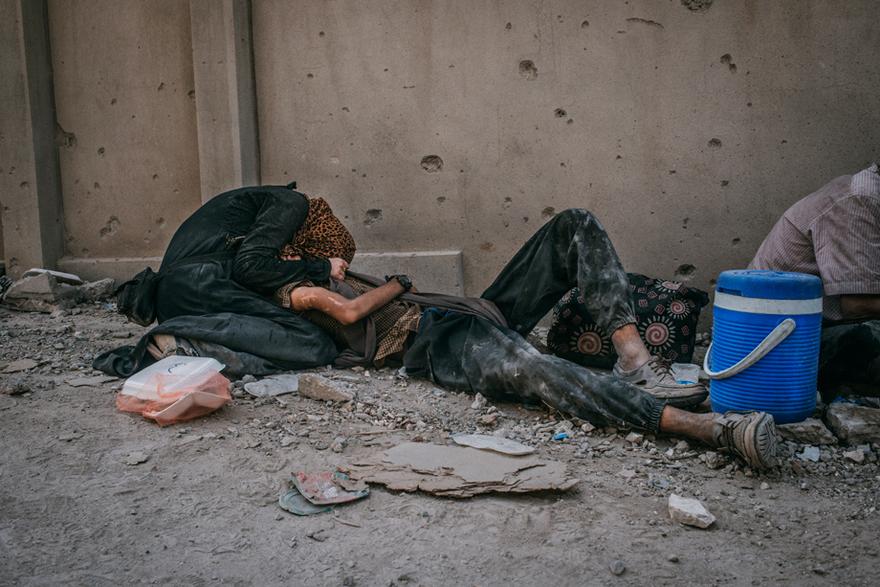
Erschöpft: Einem Luftangriff in der Altstadt von Mossul sind sie nur knapp entkommen:photo © Emanuele Satolli via ZEITONLINE, 15 July 2017
Amnesty Accuses U.S. Coalition of War Crimes in Mosul: Scale of Death Much Higher Than Acknowledged: Democracy Now! interview with Nicolette Waldman, Iraq researcher at Amnesty International and co-author of the new Amnesty report, "At Any Cost: The Civilian Catastrophe in West Mosul, Iraq", 18 July 2017
NICOLETTEWALDMAN: What we found is that both ISIS and the Iraqi and coalition forces inflicted massive harm on civilians during the battle for west Mosul. On the one hand, ISIS systematically moved thousands of civilians directly into areas of active fighting, and then they trapped them there. On the other hand, Iraqi and coalition forces then subjected these very same areas to relentless attacks. These attacks used explosive and imprecise weapons that killed and injured thousands of civilians and left the city flattened.
JUAN GONZÁLEZ: And, Nicolette, were you able to interview people in both east and west Mosul? And what were some of the things that they told you directly, the civilians in—trapped in these zones?
NICOLETTEWALDMAN: This report focused only on the battle for west Mosul. And we had covered the battle in east Mosul in previous outputs. But this report really focused in on the battle that took place between February and then just ended officially days ago. And for this research, we visited west Mosul, we visited east Mosul, and then we talked to people in camps around the city who had fled either days or weeks before we spoke with them.
And what they told us was that this battle was horrific. Basically, they had been rounded up and forced into the battle, and then they had no way out. And what actually happened for so many people is that because they were forced to move into the city, and then, as the battle continued, they were forced to fall back, so as the front lines went back, the civilians moved back with those front lines. And the area in west Mosul became increasingly packed with civilians. So, because ISIS was preventing people from escaping, this meant that they only had one way out, in most cases, and that was directly through the front lines of the battle. And what people told us time and time again is that they didn’t wait for the battle to subside or the fighting to calm down. Instead, they waited for the fighting to actually reach its peak, and that was the moment when they ran out into the middle of the street, usually. They would sit down, they would raise their hands, and they would say, "Civilians, families," and sit and wait for the Iraqi forces to motion them forward. Only then would they literally make a run for it and make it out of this battle. So, the cost to civilians was extremely high. And really, what we want to do with this report is to bring attention not to the victory that so many are talking about in the last few days, but to the tremendous cost that civilians suffered during this battle.

Weg von hier: Hinter ihnen liegt der Teil von Mossul, der zuletzt noch schwer umkämpft war:photo © Emanuele Satolli viaZEITONLINE, 15 July 2017
AMYGOODMAN: Speaking to NPR Thursday, Air Force Brigadier General Andrew Croft responded to the findings of your report, of the Amnesty report.
BRIG. GEN. ANDREWCROFT: I think it’s an unfair accusation. They have not coordinated with the coalition. I’ll tell you that from the way we do our airstrikes, we use the most precise and discriminate weapons we can ever use and are available in the world to avoid targeting civilians. And I’ll tell you, if there’s ever a doubt of whether or not there’s a civilian involved, we will not strike. And so, this is the most precision, low-collateral level of warfare, especially in an urban environment like this, which has not been seen since World War II, that you could ever construct. And so, we have done, in my view, the absolute best job we can to avoid any civilian casualties. They’re going to happen, just based on the nature of the war. But I can tell you that to be effective, we’ve got to support the Iraqi security forces, and that’s what we’ve done.
AMYGOODMAN: Nicolette Waldman, can you respond to Air Force Brigadier General Andrew Croft?
NICOLETTEWALDMAN: That is not what we found on the ground. And basically, we spent weeks sitting with families, talking to them. And it seemed as if, to me, every third family we talked to had lost a family member in one of these Iraqi and coalition air force airstrikes or ground attacks. And it was actually so common for people to be full of shrapnel—I met whole families who were full of shrapnel—that they wouldn’t even seek medical attention.
So, to his claims that this was the most precise campaign in the history of warfare, I would respond just with my experience with the civilians’ experience of what they went through, and basically would call on the Iraqi and coalition air forces to use their great technological advantages to better affect—to better protect civilians in places such as west Mosul, because what we found was quite the contrary. We found that Iraqi forces, in particular, were consistently using IRAMs, improvised rocket-assisted munitions. These are basically flying IEDs. They have a massive warhead, and they cannot be precisely targeted. So these were being flung into neighborhoods where people were trapped, where they had no way out, and where often people were packed in one house between groups of—groups between 15 and a hundred civilians. So, when this type of imprecise—these weapons that cannot be targeted are launched into areas like this, the cost is going to be high. And we would call on the U.S. and Iraq coalition, the coalition and Iraqi forces, to do better in the future, to prioritize civilian protection and to uphold their obligations under international humanitarian law, which requires them not to use the type of weapons they did, these imprecise explosive weapons, in these very densely populated areas.

Ein kleiner Moment der Ruhe: Sie haben es aus einem Teil der Mossuler Altstadt herausgeschafft, in dem sich irakische Truppen und IS-Kämpfer heftige Gefechte liefern.: photo © Emanuele Satolli via ZEITONLINE, 15 July 2017
JUAN GONZÁLEZ: And what did you find out about the reports from the coalition forces that ISIS was using civilians as human shields? How prevalent was that, from what you were able to find out?
NICOLETTEWALDMAN: It was absolutely prevalent, and to a scale even we didn’t expect. What was happening is they weren’t just using humans as shields to protect their own forces. They were moving people in to the battle. So starting in even the months before the battle for west Mosul started, they rounded up civilians in buses, in trucks, and forced them sometimes to move by foot, by the thousands. So they moved them into west Mosul. Then, once they were there, they moved them back and kept them with them from neighborhood to neighborhood. So this could have been one of the most prevalent use of human shields, or using civilians just protect their own forces, in modern history.
And what happened then, as well, is they didn’t just put them into this amazing risk. They kept them there so that people who would try to escape and save their own lives would be executed by snipers as they were running to safety. And then the bodies of these people would be hung by ISIS in public areas as a warning for those who might just consider trying to escape. So this meant that people could not escape. And in some cases, not just here or there, but again and again, we heard that people were being welded into their houses. So the front doors were actually being welded together. We heard that people had booby traps set in the exits of their houses so they could not leave. This meant that huge groups of civilians were sheltering in these homes and being used as human shields in such an egregious way and a deliberate away.
But then what was happening is these very same areas, where these people were trapped, these areas were being barraged by air attacks and ground attacks by the Iraqi and coalition forces. And what we found was that most attacks weren’t actually killing the high numbers, of attacks like the Mosul al-Jadida attack on March 17th. Instead, they were killing between one and 20 civilians. And most of these deaths will actually go unnoticed and, so far, have not been acknowledged, because, actually, in Mosul, in west Mosul, ISIS had completely banned the use of mobile phones. And they don’t have the kind of infrastructure to rescue people to actually go after and document these deaths. So what we found when we were doing this research is that the scale of death was much, much higher than has so far been acknowledged. And Airwars, who you mentioned just at the beginning of your show, estimated that between just February 2017 and June 2017, as many as 6,800 people were killed in attacks by the Iraqi and coalition forces. And just during our research, so during the 151 interviews that we conducted with west Mosul residents, we documented 45 unlawful attacks. And these attacks killed at least 426 civilians and injured 100. So the scale of suffering and the scale of death and injury has really not been grappled with yet. And I’m afraid we’ll be finding out in the months and the years to come of the true toll of this operation.

Selfies mit dem Feind: Irakische Soldaten, nachdem sie einen Kämpfer des "Islamischen Staats" in der Altstadt von Mossul gefangen genommen haben.: photo© Emanuele Satolli via ZEITONLINE, 15 July 2017

Den Gefangenen präsentieren die Iraker wie eine Trophäe.: photo© Emanuele Satolli via ZEITONLINE, 15 July 2017

Diese Frauen und Kinder haben nach ihrer Flucht aus der Altstadt von Mossul von der irakischen Armee Essen bekommen.: photo© Emanuele Satolli via ZEITONLINE, 15 July 2017

Nach einem Luftangriff der Anti-IS-Koalition steigt über Mossul Rauch auf.: photo© Emanuele Satolli via ZEITONLINE, 15 July 2017

Mitglieder der irakischen Spezialkräfte, der Goldenen Division, in einem Gefecht gegen IS-Kämpfer.: photo© Emanuele Satolli via ZEITONLINE, 15 July 2017

Gefangene der irakischen Armee: Die Männer konnten ein stark umkämpftes Areal verlassen, doch ihnen wird vorgeworfen, IS-Kämpfer oder -Sympathisanten zu sein.: photo© Emanuele Satolli via ZEITONLINE, 15 July 2017

Irgendwohin, wo es sicherer ist: eine Frau mit ihren Kindern.: photo© Emanuele Satolli via ZEITONLINE, 15 July 2017

Ein irakischer Soldat der Spezialkräfte in einem Gebäude nahe der Frontlinie mit den letzten IS-Kämpfern.: photo© Emanuele Satolli via ZEITONLINE, 15 July 2017

Irakische Spezialkräfte während eines Gasangriffs der Dschihadisten in Mossul.: photo© Emanuele Satolli via ZEITONLINE, 15 July 2017

Verschanzt zwischen Trümmern: irakische Spezialkräfte in der Altstadt von Mossul.: photo© Emanuele Satolli via ZEITONLINE, 15 July 2017

Einer flieht, einer verteidigt die Position in der Altstadt von Mossul gegen IS-Kämpfer.: photo© Emanuele Satolli via ZEITONLINE, 15 July 2017

Gepanzerte Fahrzeuge der irakischen Truppen in Mossul.: photo© Emanuele Satolli via ZEITONLINE, 15 July 2017

Zerstörtes Gebäude in der Altstadt von Mossul.: photo© Emanuele Satolli via ZEITONLINE, 15 July 2017

Wohin, das wissen sie noch nicht, aber die Kämpfe zwingen sie zur Flucht.: photo© Emanuele Satolli via ZEITONLINE, 15 July 2017

Ihn haben die irakischen Kräfte abgefangen, er könnte ein IS-Kämpfer oder -Sympathisant sein – nun wartet er auf sein Verhör.: photo© Emanuele Satolli via ZEITONLINE, 15 July 2017

#ISIS so daunting because West never put a face to them. Makes Iraqis carting off suicide belts more scary than reassuring. #Mosul @Reuters: image via Reading The Pictures @ReadingThePix, 17 July 2017

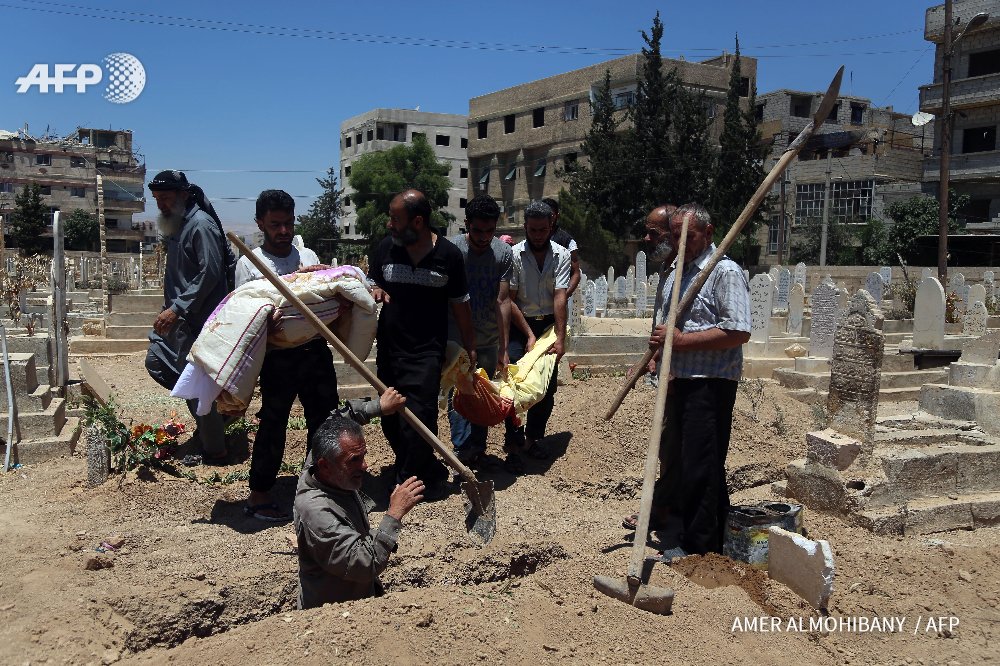
SYRIA - Syrians prepare to bury two children killed in a reported airstrike on the rebel-held town of Hazeh. Photo @amer_almohibany #AFP: image via Frédérique Geffard @fgeffardAFP, 18 July 2017

SYRIA - Fighters supporting the Syrian Democratic Forces in the combat against Islamic State fighters in western Raqa. Photo @Kilicbil: image via Frédérique Geffard @fgeffardAFP, 18 July 2017
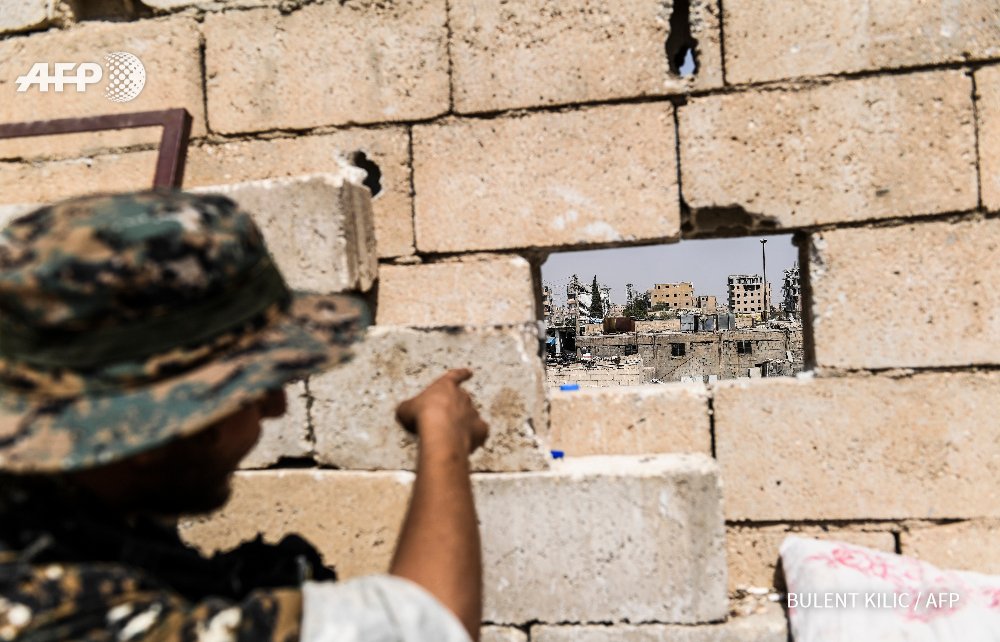
SYRIA - Fighters supporting the Syrian Democratic Forces in the combat against Islamic State fighters in western Raqa. Photo @Kilicbil: image via Frédérique Geffard @fgeffardAFP, 18 July 2017
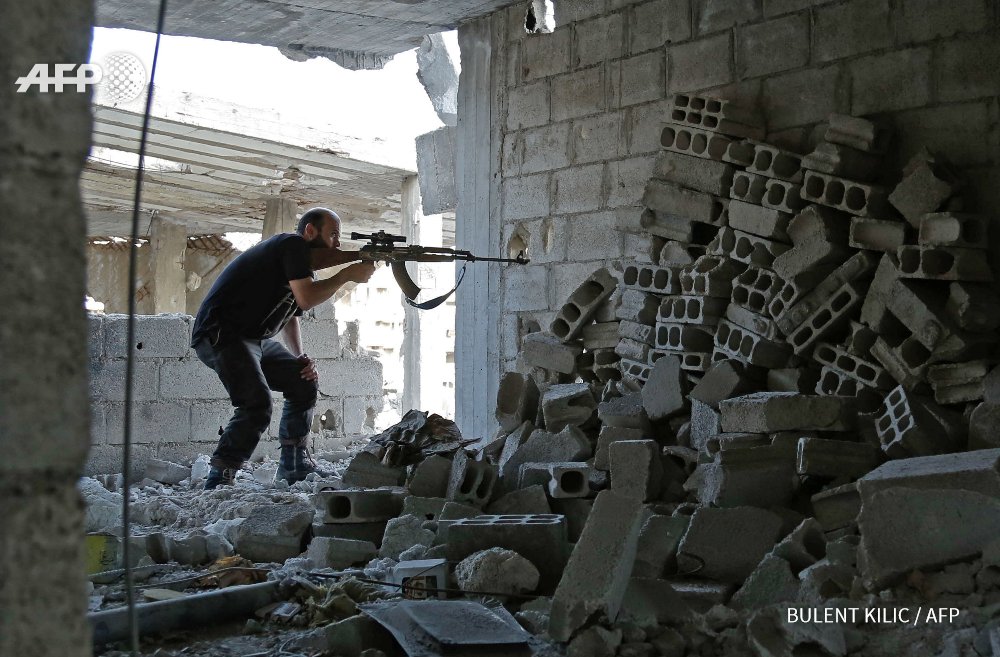
SYRIA - Fighters supporting the Syrian Democratic Forces in the combat against Islamic State fighters in western Raqa. Photo @Kilicbil: image via Frédérique Geffard @fgeffardAFP, 18 July 2017
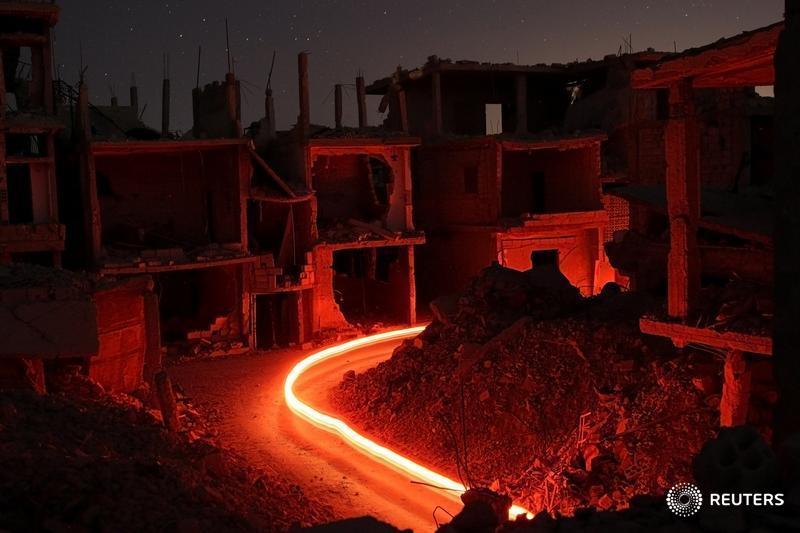
Damaged buildings are pictured at night in the rebel-held area of Deraa, Syria: image via Reuters Pictures @reuterspictures, 17 July 2017
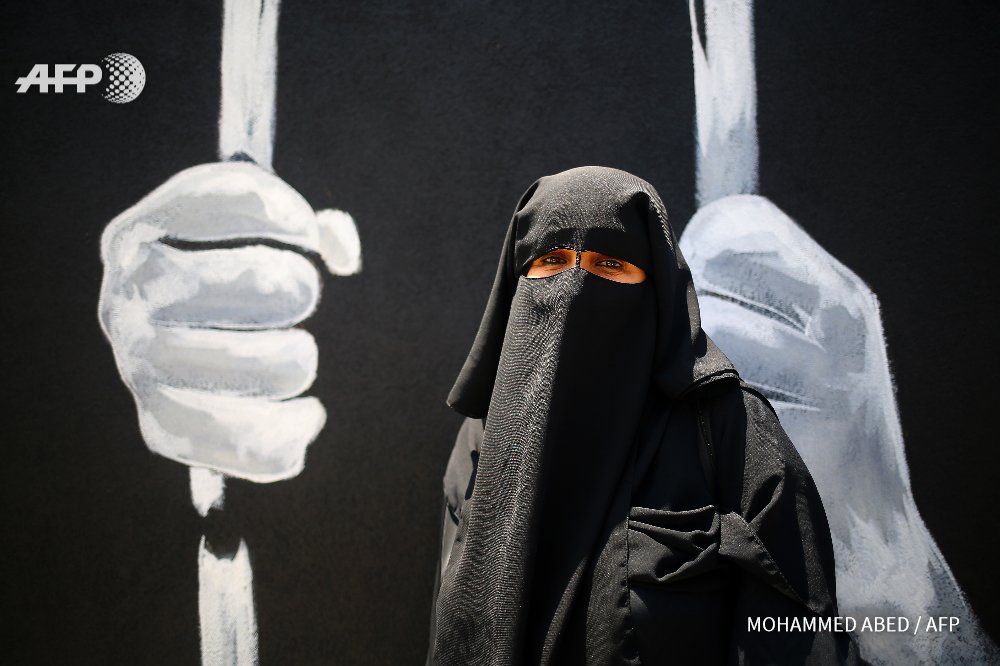
GAZA CITY - A Palestinian woman attends a demonstration against the siege of Gaza and in solidarity with Al-Aqsa Mosque. Photo @mohmdabed #AFP: image via Frédérique Geffard @fgeffardAFP, 18 July 2017

GAZA CITY - Palestinian girls swim at the beach on a hot day in Gaza City.: image via Frédérique Geffard @fgeffardAFP, 17 July 2017
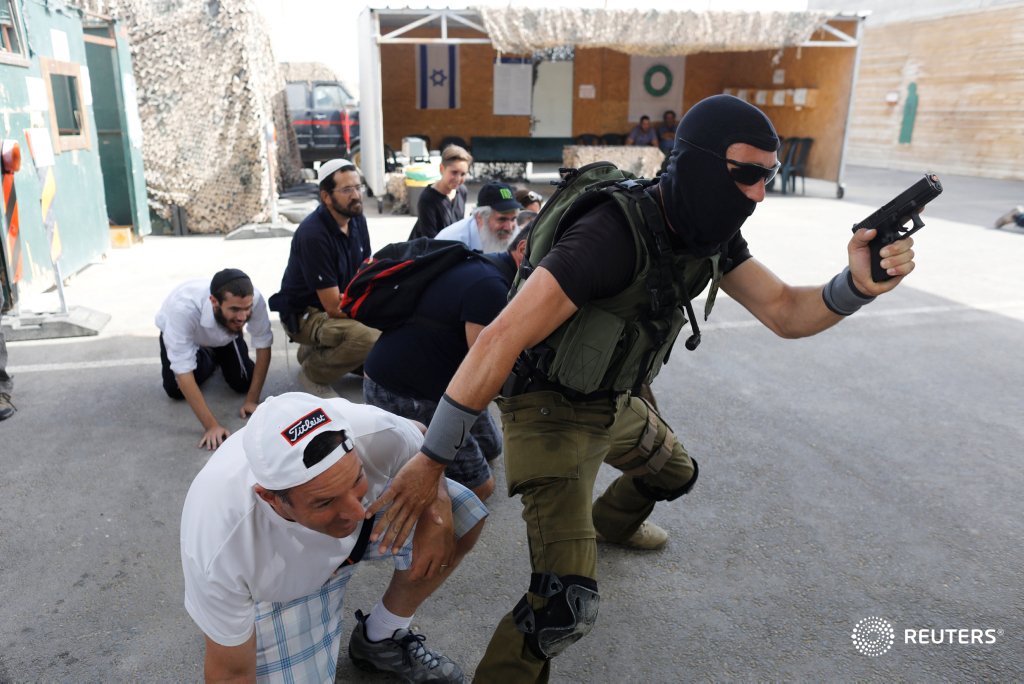
An Israeli 'counter-terrorism boot camp' in the occupied West Bank puts tourists in a simulated attack on a market: image via Reuters Pictures @reuterspictures, 18 July 2017

#Kuwait Amateur fishermen fish at a dock on a main beach in Kuwait City. Photo Yasser Al-Zayyat: image via Frédérique Geffard @fgeffardAFP, 18 July 2017
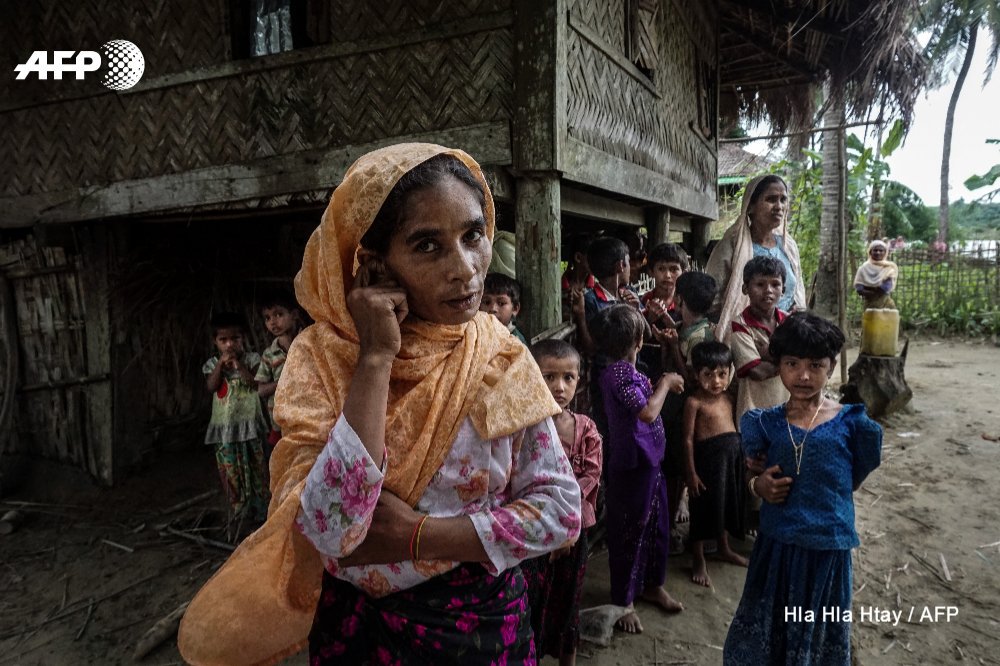
#Myanmar Myanmar's Rohingya: cornered by poverty, stalked by violence Photo by Hla-Hla Htay #AFP: image via Frédérique Geffard @fgeffardAFP, 18 July 2017
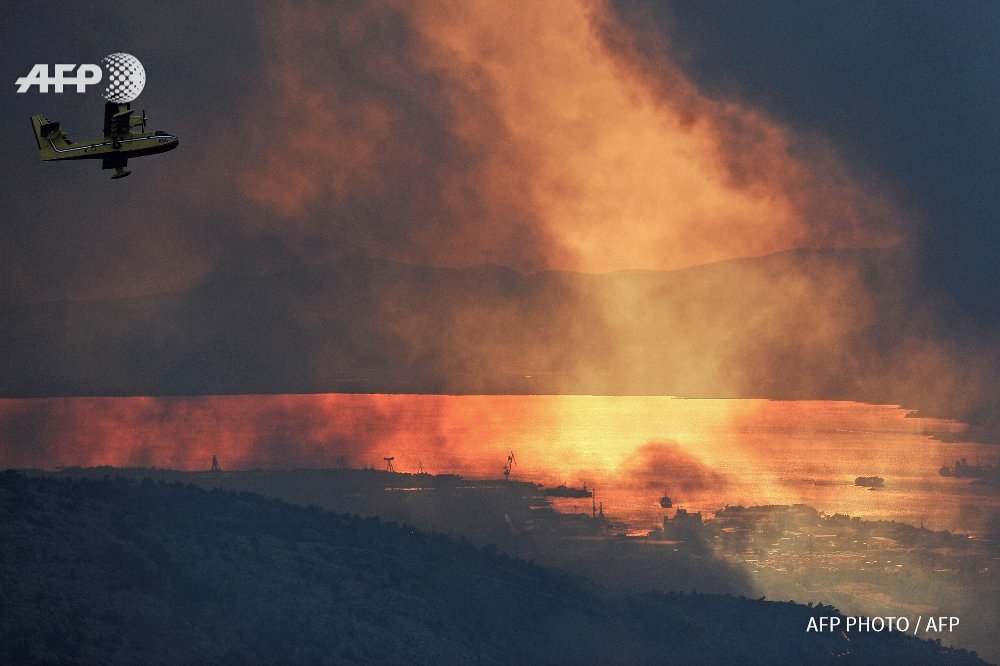
#Croatia A Canadair of the Croatian Air Force flies over Gornje Sitno, near Split, during a fire. Photo @AFPphoto: image via Frédérique Geffard @fgeffardAFP, 18 July 2017

#Indonesia Acehnese fishermen cleaning their nets after a fishing trip in Banda Aceh. Photo @mirroreye #AFP: image via Frédérique Geffard @fgeffardAFP, 18 July 2017

#Bulgaria Tall buildings are seen through rain drops on a car windshield on a rainy day in Sofia Photo @dilkoff #AFP
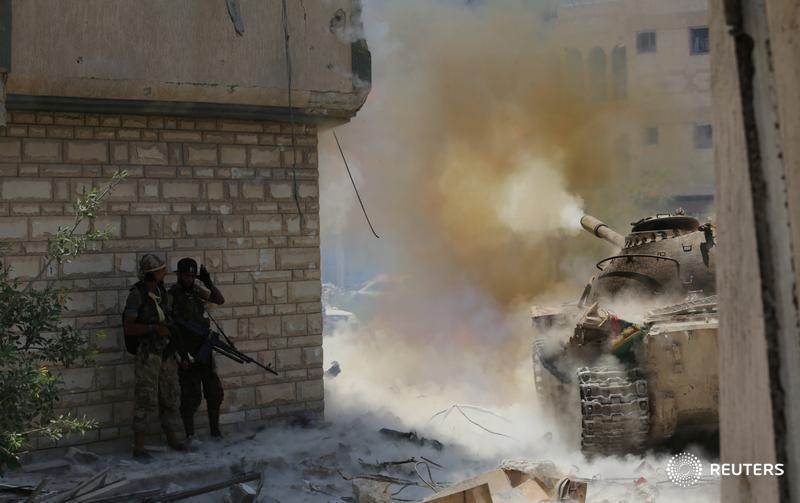
A Libyan tank fires towards Islamist militants during clashes to retake their last stronghold in Benghazi: image via Reuters Pictures @reuterspictures, 18 July 2017

Swans are counted and assessed during the 'swan upping' census on Britain's River Thames: image via Reuters Pictures @reuterspictures, 18 July 2017

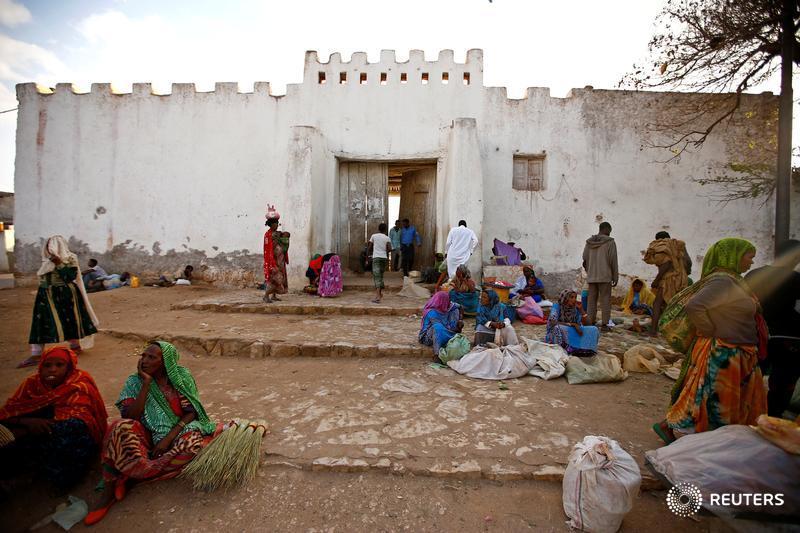
Hyenas roam the streets of the city of Harar in Ethiopia every night, seeking scraps of meat: image via Reuters Pictures @reuterspictures, 18 July 2017

"I have a baby hyena in my house and keep it in my bedroom..." - Hyena Man: image via Reuters Pictures @reuterspictures, 18 July 2017
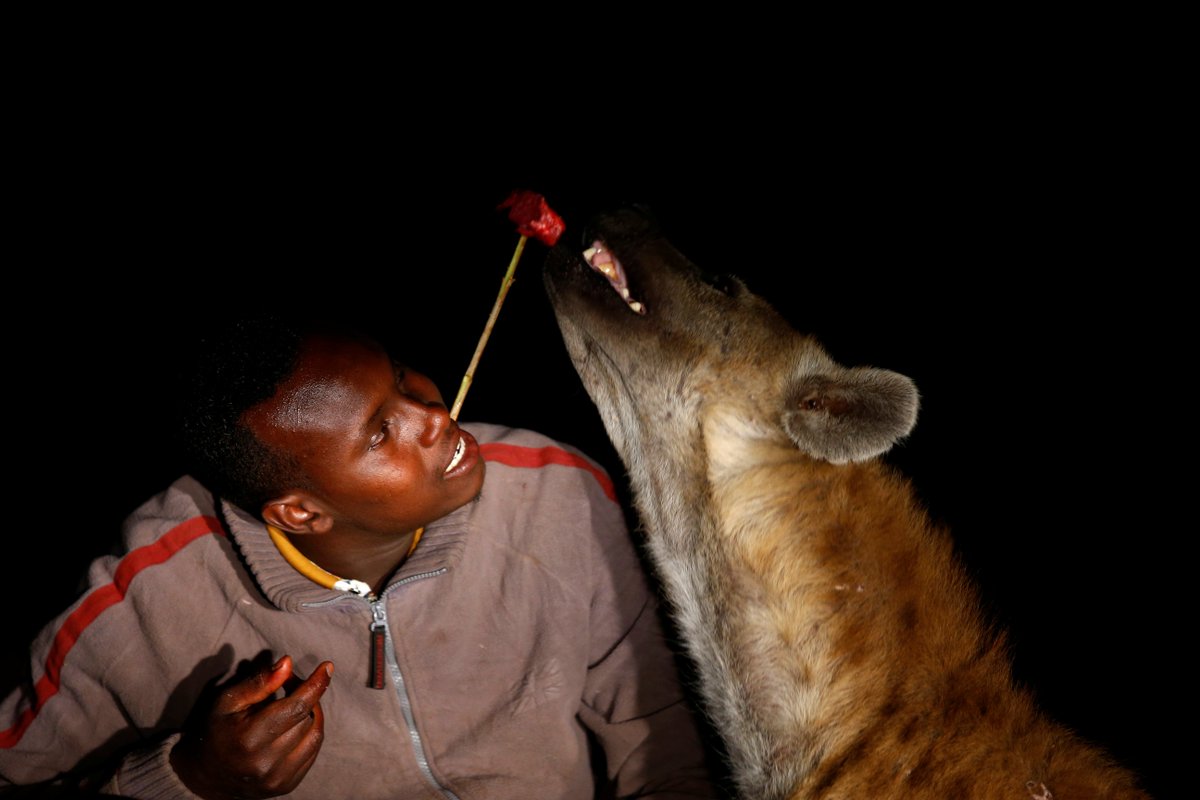
Hyena Man feeds hyenas directly from his mouth to encourage visitors to trust them in Ethiopia: image via Reuters Pictures @reuterspictures, 18 July 2017

Trump dons Stetson hat, climbs into fire truck and swings baseball bat at 'Made in America' showcase at White House: image via Reuters Pictures @reuterspictures, 18 July 2017: image via Reuters Pictures @reuterspictures, 18 July 2017


#USA President Trump holds a Marucci baseball bat during a "Made in America" product showcase event at the White House. Photo Olivier Douliery: image via Frédérique Geffard @fgeffardAFP, 18 July 2017

In his happy place. #MadeInAmericaWeek #reuterspictures #Trump #WhiteHouse: image via Reading The Pictures @ReadingThePix, 17 July 2017

The chameleon. Photo @drewharrar @Bloomberg #urbancowboy #MadeInAmerica #trump #whitehouse: image via Reading The Pictures @ReadingThePix, 17 July 2017
Edward Dorn: Ode on the Facelifting of the "statue" of Liberty
A B H O R R E N C E S
4 July, 1986
America is inconceivable without drugs
and always has been. One of the first acts
was to dump the tea. The drug that furnished
the mansions of Virginia was tobacco,
a drug now in much disrepute.
Sassafras, a cure-all, is what they came for
and they dealt it by the bale altho it
was only a diaphoretic to make you perspire—
people were so simple in those days.
The Civil War saw the isolation of morphine
making amputation a pleasure and making
the block of wood between the teeth,
which was no drug, obsolete. Morphinism
was soon widespread among doctors and patients.
At this date interns, the reports tell us,
are among the premier drug ab/users
of said moralistic nation. “Rock” stars
(who notoriously “have” doctors)
consume drugs by the metric ton
even as they urge teenagers to Say No.
The undercurrent of American history
has been the running aches and pains
of the worn path to the door of the apothecary
to fetch cannabis and cocaine elixirs
by the gallon. It has been all prone
all seeking Florida, Ponce de León
was just the beginning of a statistical curve
whose only satisfaction would be total vertigo.
His eager search for youth has become our
frantic tilt with death and boredom,
in fact we are farming death in Florida
with far greater profit than we are
farming food in Iowa -- elixirs are as multiform
as the life-style frauds we implore,
a cultural patchwork fit for a fool
in the only country in the world
with a shop called the Drug Store.
4 July, 1986
America is inconceivable without drugs
and always has been. One of the first acts
was to dump the tea. The drug that furnished
the mansions of Virginia was tobacco,
a drug now in much disrepute.
Sassafras, a cure-all, is what they came for
and they dealt it by the bale altho it
was only a diaphoretic to make you perspire—
people were so simple in those days.
The Civil War saw the isolation of morphine
making amputation a pleasure and making
the block of wood between the teeth,
which was no drug, obsolete. Morphinism
was soon widespread among doctors and patients.
At this date interns, the reports tell us,
are among the premier drug ab/users
of said moralistic nation. “Rock” stars
(who notoriously “have” doctors)
consume drugs by the metric ton
even as they urge teenagers to Say No.
The undercurrent of American history
has been the running aches and pains
of the worn path to the door of the apothecary
to fetch cannabis and cocaine elixirs
by the gallon. It has been all prone
all seeking Florida, Ponce de León
was just the beginning of a statistical curve
whose only satisfaction would be total vertigo.
His eager search for youth has become our
frantic tilt with death and boredom,
in fact we are farming death in Florida
with far greater profit than we are
farming food in Iowa -- elixirs are as multiform
as the life-style frauds we implore,
a cultural patchwork fit for a fool
in the only country in the world
with a shop called the Drug Store.
Edward Dorn (1929-1999):Ode on the Facelifting of the "statue" of Liberty:A B H O R R E N C E S,4 July, 1986
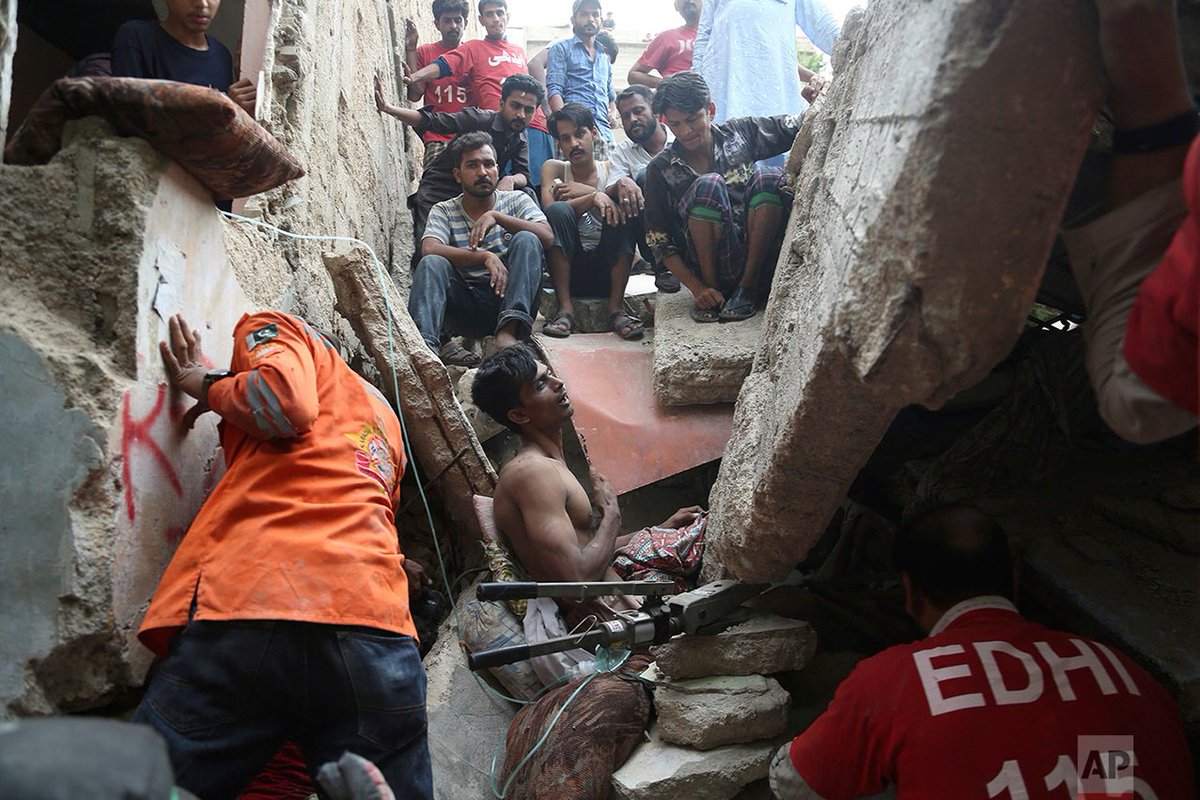
Pakistani volunteers try to rescue a trapped resident from a dilapidated, three-story building in Karachi, July 18, 2017.: image via AP Images @AP_Images, 18 July 2017













